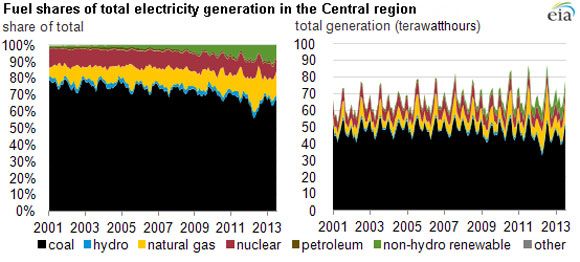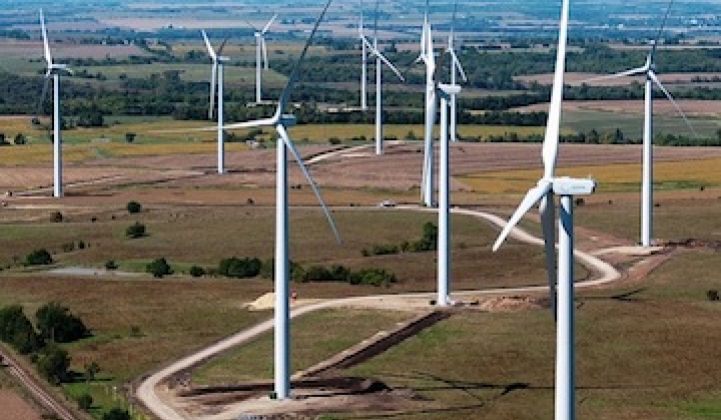At first glance, a new chart from the U.S. Energy Information Administration suggests that coal is not just king in the Midwest’s electricity mix, but still reigns with an iron grip.

Look a little closer, however, and there is change in the works, as shown in a growing green strip on the top of the first graph.
About a decade ago, coal supplied nearly 80 percent of electricity in the central United States. The figure is now dipping closer to 60 percent. That is still far higher than the national average, where coal accounts for slightly less than half of all generation.
Like other regions of the U.S., cheap natural gas generation is mostly taking the place of coal. But non-hydro renewables, primarily wind, are also making a significant dent. The low cost of wind and natural gas has begun to make a dent in coal's dominance and driven down wholesale power prices in the middle of the country, according to the EIA. Coal producers are also seeing smaller dark spreads, which is the difference between the payment coal-fired power plants get for their electricity and the cost of coal.

Wind will continue to increase as transmission constraints are addressed in the region. Gas could also be hitting a temporary wall because of pipeline constraints, Jameson Smith, manager of regulatory studies at the Midwest Independent System Operator, said last year.
To prepare for the retirement of many old coal plants due to coming EPA regulations, MISO is planning to expand demand response offerings in the region. PJM has also invested in transmission in Ohio to ease constraints caused by retiring coal plants. Transmission upgrades and energy efficiency are allowing some coal plants to be retired without affecting reliability.
It is unclear the extent to which wind will kick coal to the sidelines in coming years, but Denmark’s experience suggests there is no limit.



